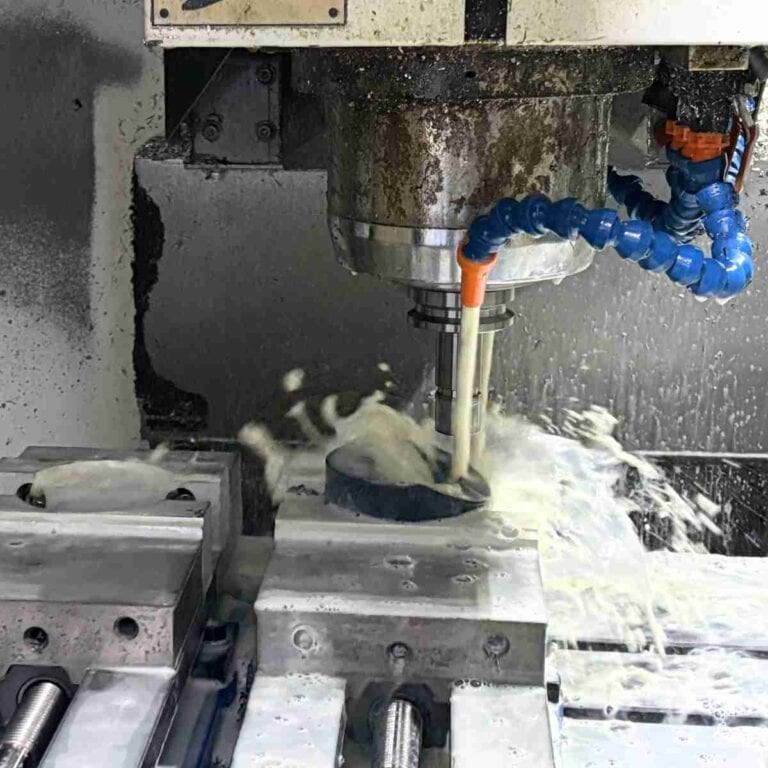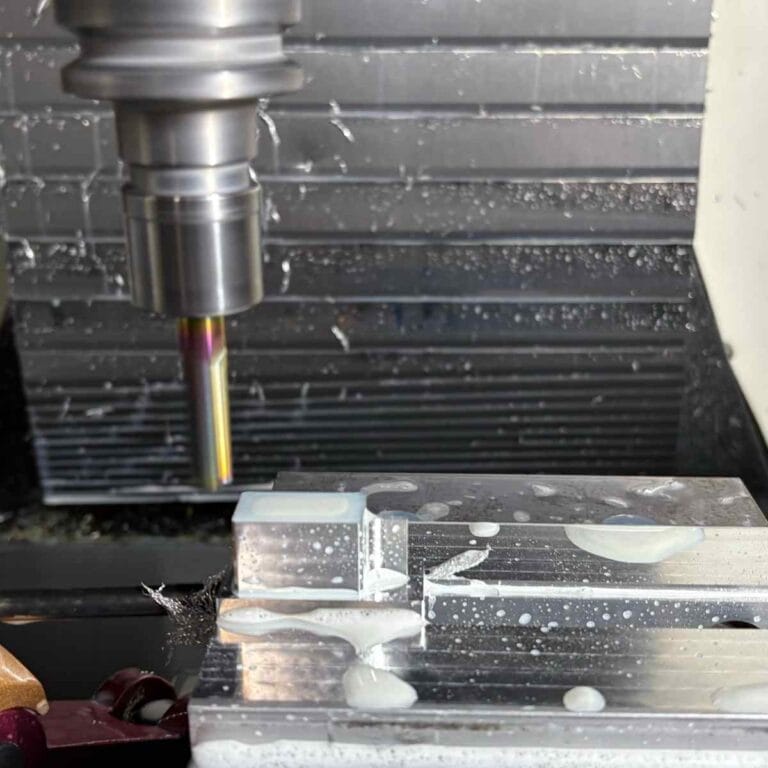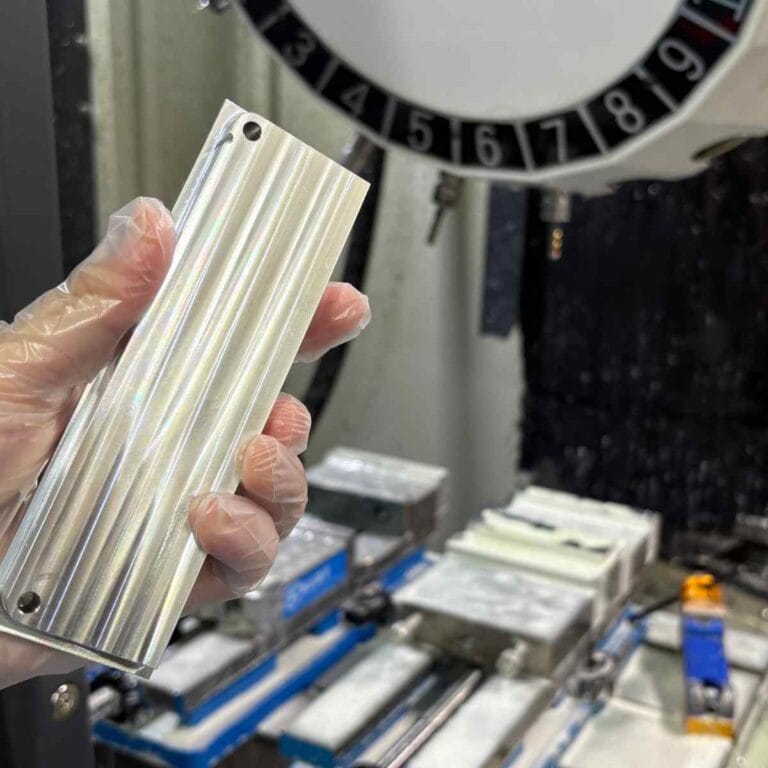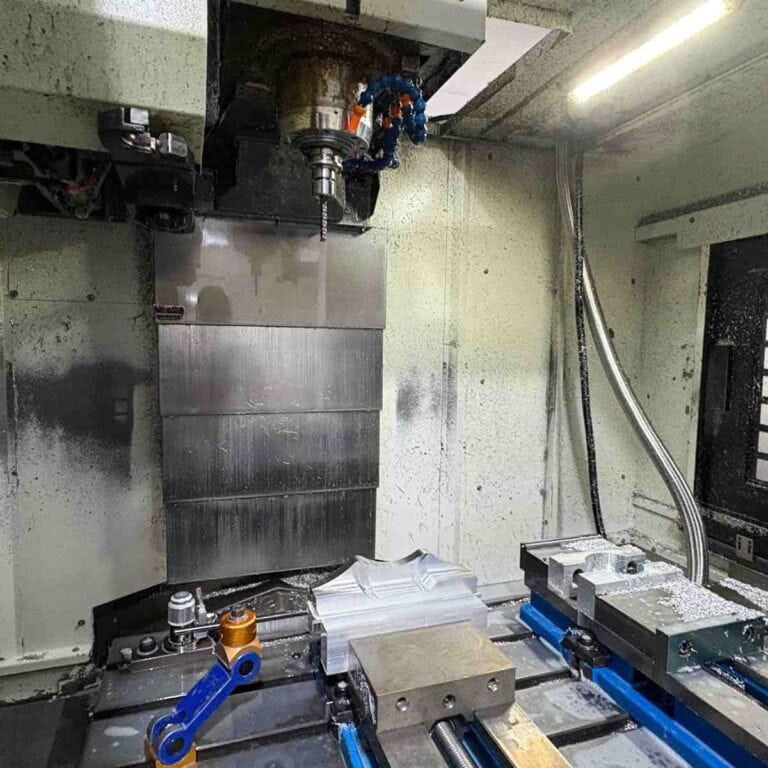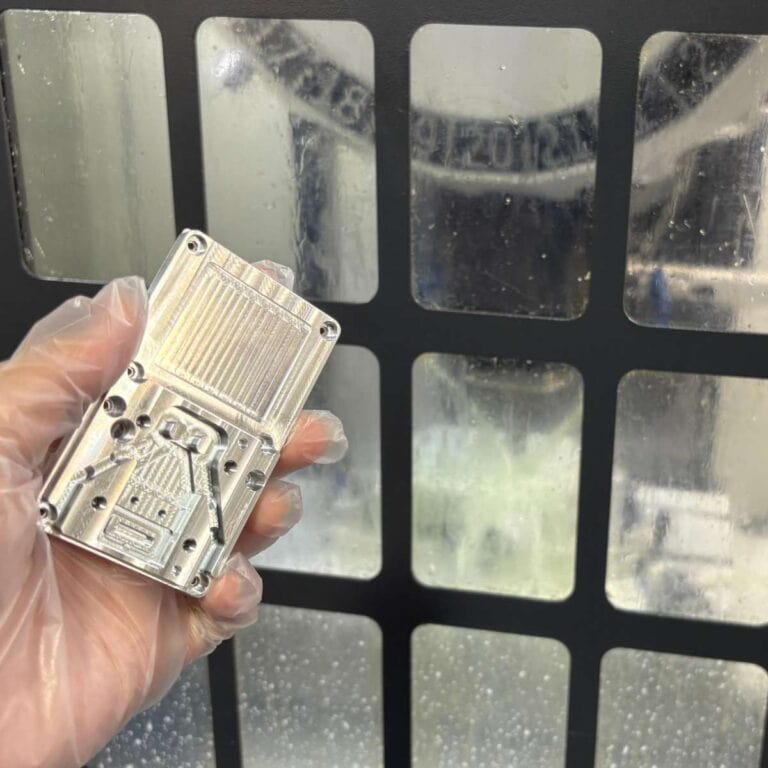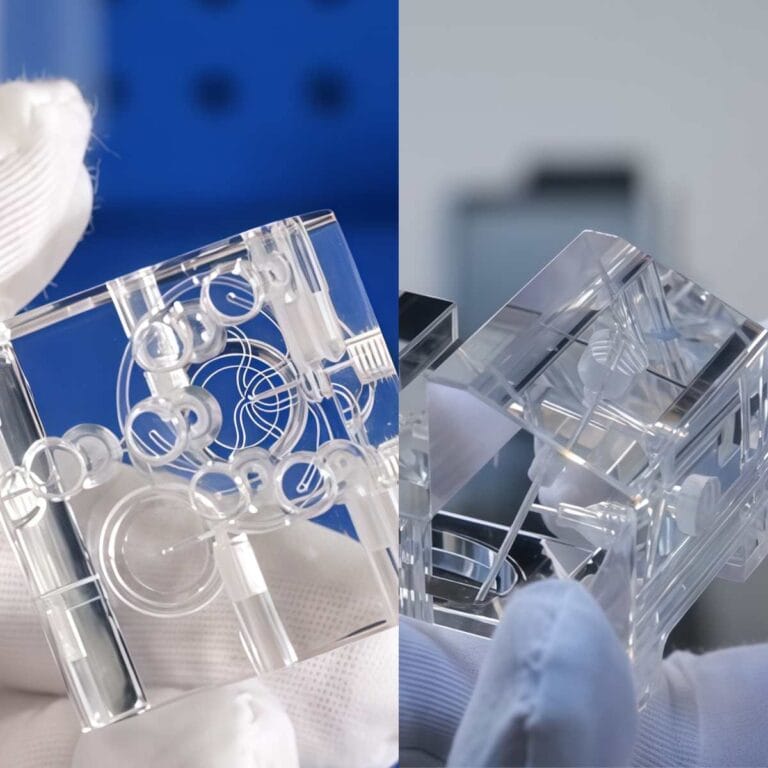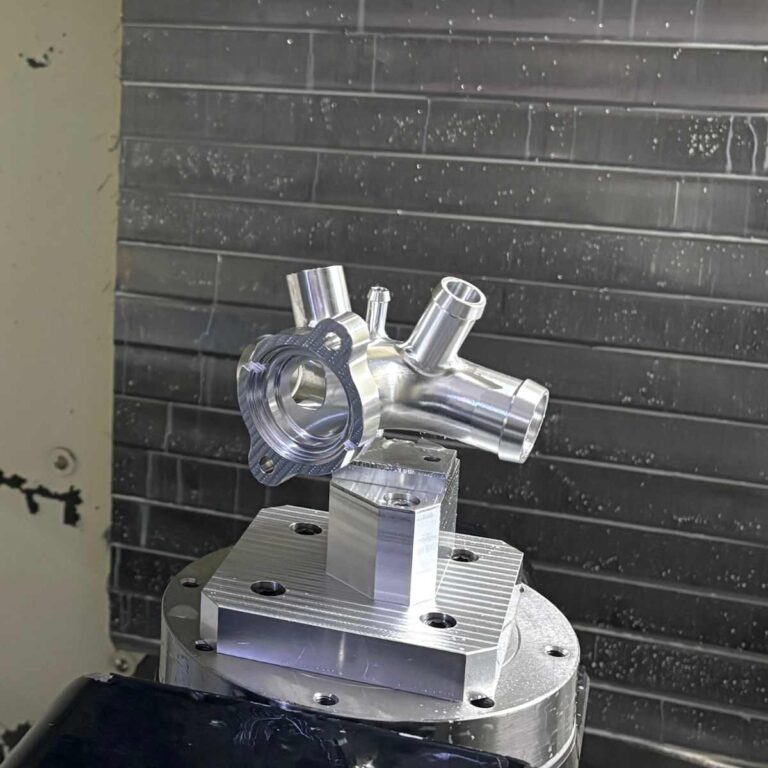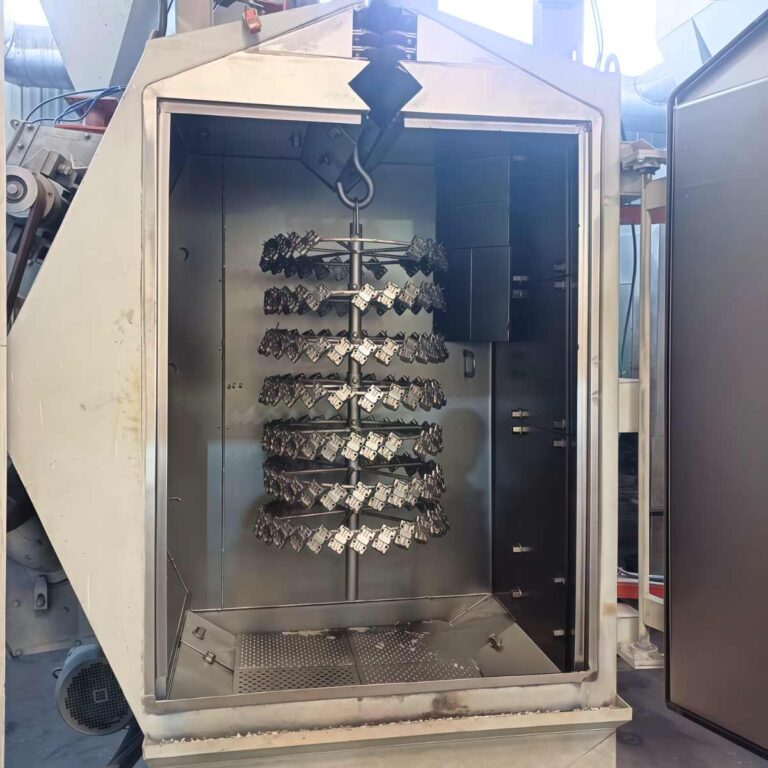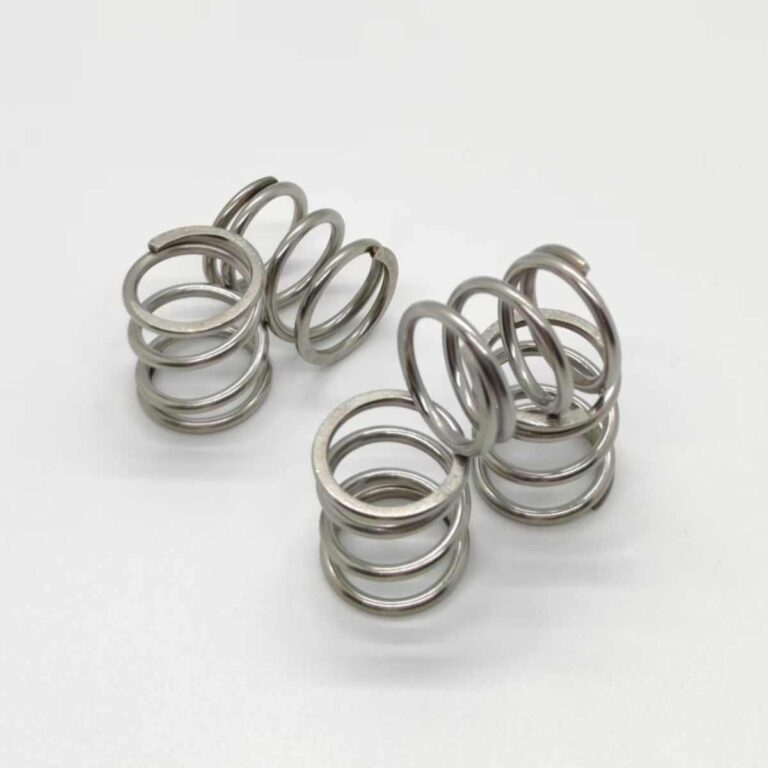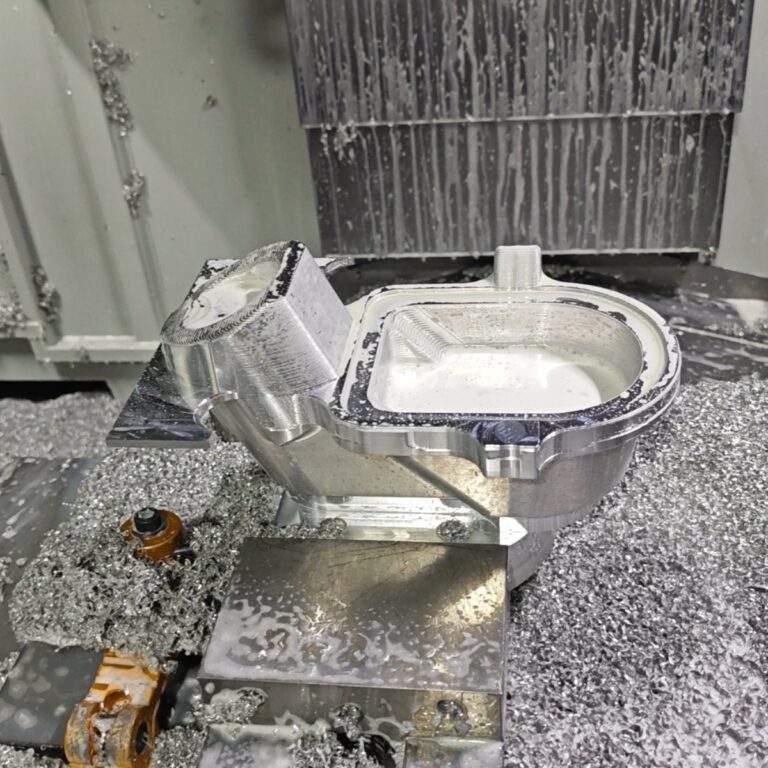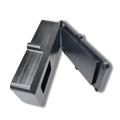In the field of CNC machining, how to choose the right equipment has always been an important issue that manufacturers, designers, purchasers and process engineers need to face. Based on my ten years of experience in CNC industry, combined with actual cases and industry data, this article will systematically compare 3-axis and 5-axis CNC machining from multiple dimensions such as basic definition, working principle, performance characteristics, cost analysis, and industry applicability, aiming to provide in-depth and actionable reference for enterprises and individuals.
What Is 3-axis CNC Machining
Among CNC machining systems, 3-axis CNC is the most basic and widely used type. Its working principle is to cut the workpiece by moving the tool along the three axes of X, Y, and Z. The workpiece is fixed on the worktable, and the tool moves along the set path to complete the machining. It is suitable for plane, two-dimensional contour, drilling and other processes.
In the factory where I work, 3-axis CNC processing equipment takes over 70% of daily orders, mainly because the equipment has low investment, flexible operation, simple programming, and can meet the processing needs of a large number of standard parts and flat parts.
How 3-axis CNC Works
In 3-axis CNC machining, the tool movement is limited to the three directions of X (left and right), Y (front and back), and Z (up and down). The tool always cuts perpendicular to the workpiece surface. If you need to process inclined holes, complex curved surfaces or chamfered structures, you often need to flip the workpiece multiple times and use special fixtures to complete it.
For example, I processed an end cap for a motor manufacturing customer. The part required processing holes, slots and positioning surfaces on the same plane. When using 3-axis CNC machining, the workpiece needs to be flipped and clamped after the initial machining, and then the reverse side machining is completed through secondary positioning. Although the technical requirements can be met, the risk of clamping errors increases and the machining cycle is extended due to the need for multiple flips.
Main Features Of 3-axis CNC
Easy to operate. Most operators can master the equipment operation process after a short training.
Equipment investment is low. The price of a standard 3-axis CNC equipment is between RMB 50,000 and RMB 200,000, which is suitable for investment by small and medium-sized enterprises.
The programming difficulty is moderate. Tool paths can be quickly generated through CAM software such as Mastercam, UG, and SolidCAM.
There are structural limitations. When facing inclined surfaces, complex curved surfaces, and inner cavity structures, direct processing is not possible and requires additional fixtures or multiple flips.
I once processed a set of lamp molds for an automobile mold factory. Since it contained multiple inclined holes and curved surface structures, it was necessary to use 6 sets of special fixtures and flip the workpiece 4 times using only 3-axis CNC, which increased the overall working hours and labor costs by 60%.
What Is 5-axis CNC Machining
Compared with 3-axis CNC, 5-axis CNC adds two rotation axes (A, B or C axis) on the basis of the original X, Y, and Z axes, so that the tool can approach the workpiece at different angles during processing, realizing continuous processing of multi-angle and complex surfaces.

In other words, the workstations that 3-axis CNC needs to be flipped or re-clamped multiple times can be completed by 5-axis CNC with one clamping, which is especially suitable for the processing of complex curved surfaces, inclined holes, and special-shaped structures.
How 5-axis CNC Works
I first experienced the benefits of 5-axis CNC while machining engine blades for an aerospace customer. By rotating the tool around the X and Y axes, the ideal contact angle between the tool and the workpiece is achieved, thus avoiding the tedious process of frequently turning the workpiece. Finally, one device can complete high-precision machining of multiple surfaces in one clamping, which significantly improves efficiency.
For example, when processing turbine blades for aircraft engines, 5-axis CNC can directly process the blade surface from different angles, ensuring the integrity and smoothness of the continuous surface, which is an effect that 3-axis CNC cannot achieve.
Main Features Of 5-axis CNC
Can process complex curved surfaces. There is no need to flip and clamp multiple times, which avoids positioning errors caused by changing processes.
Higher processing accuracy. One-time clamping completes the processing of multiple surfaces and effectively controls the cumulative error.
High processing efficiency. Multiple processes are completed in one clamping, saving fixtures and labor.
The equipment investment is high. The price of a 5-axis CNC machine usually starts at 600,000 yuan, and high-end models can reach several million yuan.
The operation is more difficult. The programming and equipment debugging requirements are higher, and the operator needs to have experience in five-axis programming and interference avoidance.
We once assisted a medical device company in upgrading from 3-axis to 5-axis CNC. As a result, the processing time of a batch of titanium alloy artificial joints was shortened from 3 hours per piece to 40 minutes, and the processing accuracy was improved from ±0.03 mm to ±0.005 mm, saving more than 500,000 yuan in labor and rework costs annually.
What Is The Difference Between 3-axis And 5-axis CNC
After a deep understanding of the definition and characteristics of 3-axis and 5-axis CNC machining, we can compare them in terms of programming complexity, machining preparation, labor costs, machining capabilities, surface quality, cost performance, etc. Through my practical observations in multiple industries, these differences have a decisive impact on the production strategies of manufacturing companies.
Programming Complexity
For 3-axis CNC, machining programming is relatively simple. Operators can use CAM software such as Mastercam and UG to generate tool paths through 2D drawings, without involving multi-axis linkage calculations. In a mechanical parts factory, I trained a novice to learn 3-axis programming in just three days.
However, the complexity of 5-axis CNC programming has increased significantly. It is necessary to deal with issues such as multi-axis rotation paths, tool direction interference avoidance, and tilt angle settings in the CAM software. This not only places higher demands on operators, but also places higher demands on the company’s software authorization and computer hardware. I once assisted a mold factory in completing the 5-axis machining programming of a high-gloss mirror mobile phone shell mold. It took 36 hours to debug the tool path alone. During this period, repeated verification and simulation were performed to avoid interference, and the programming cycle was extended by about 5 times compared to 3 axes.
Processing Preparation And Setting Time
The fixtures for 3-axis CNC are usually simple, and standard vises or pressure plates can be used for clamping. However, when encountering multi-faceted and multi-angle structures, the workpiece needs to be frequently flipped and special fixtures need to be used, which increases the preparation time. For example, a car water pump housing I processed required 5 sets of fixtures and 4 positionings using 3-axis CNC processing. Each positioning took an average of 15 minutes, resulting in the overall preparation taking more than 1 hour.
The 5-axis CNC can complete multi-faceted machining in one clamping, greatly reducing the preparation process. I designed a 5-axis fixture for a customer, which can process all the holes and flange surfaces of the water pump housing in just one clamping, shortening the machining preparation time to 20 minutes, reducing the preparation time by 70%.
Labor Costs And Flexibility
In terms of labor costs, 3-axis CNC requires more manpower due to frequent flipping, re-clamping, and inspection. For low-volume and high-variety production, operators need to constantly adjust the machine status, increasing labor intensity.
The high integration of 5-axis CNC reduces the workpiece transfer process, and multiple devices can be managed independently by one skilled operator. After a customer upgraded to 5-axis, one operator can be responsible for two devices at the same time, thus saving 50% of the front-line operation manpower.
Processing Capabilities For Angular Features And Complex Structures
3-axis CNC needs to flip multiple times to achieve angle structures other than 90° vertical plane. However, 5-axis CNC can directly approach the workpiece from any angle to achieve continuous processing of inclined holes, inner cavities, and special-shaped surfaces. This advantage is particularly prominent in the fields of aerospace and medical equipment.
I once processed a helicopter transmission case shell, which contained more than 20 non-vertical holes. Using 3-axis CNC not only required 8 flips, but also required special long tool avoidance . Using 5-axis CNC, the processing was done directly by tool rotation. Ultimately, the overall processing time was reduced by 60%, and the accuracy was improved to ±0.01 mm.
Surface Quality And Precision
3-axis CNC has the risk of position error superposition due to multiple clamping, and the tool angle is not ideal in complex surface processing, resulting in reduced surface finish. I have seen a surgical instrument part processed on a 3-axis CNC with a surface roughness of Ra 1.6 μm, which required subsequent polishing and trimming.
The 5-axis CNC can maintain the best tool angle, reduce tool overhang length and vibration, and make the surface finish better. The same part is processed on the 5-axis CNC with a roughness of Ra 0.8 μm, achieving a mirror effect without the need for subsequent grinding.
Cost And Performance
From the perspective of initial investment, 3-axis CNC equipment is low-priced, cheap to maintain, and has a low operating threshold. It is more cost-effective for small factories with standard parts, large-volume orders, or limited budgets.
However, if comprehensive costs (labor, tooling, processing time, rework rate) are taken into account, 5-axis CNC has more advantages in the fields of high precision, high complexity, and small batches. A customer replaced three original 3-axis CNCs with one 5-axis CNC, saving 800,000 yuan in tooling, labor, and rework costs in two years.
Advantages And Disadvantages Of 3-Axis And 5-Axis CNC
When choosing CNC processing equipment, it is crucial to understand the advantages and disadvantages of 3-axis and 5-axis CNC. There are obvious differences between the two in terms of equipment investment, operation complexity, processing capabilities and applicable industries. In general, 3-axis CNC is suitable for standardized, large-scale, flat processing, while 5-axis CNC is more suitable for small-batch customization with complex curved surfaces, inclined hole structures and high-precision requirements.
The following table provides engineers and manufacturing companies with a clear reference by comparing key parameters, helping them make scientific choices based on product requirements and production conditions :
| Project | 3-axis CNC | 5-axis CNC |
| Equipment investment | Low (50,000-200,000 yuan) | High (RMB 600,000-2,000,000) |
| Programming Difficulty | Simple | complex |
| Difficulty of operation | General Skills | High skill requirements |
| Clamping requirements | Multiple flips | One-time clamping |
| Applicable structure | Simple plane, vertical structure | Complex curved surfaces, inclined holes |
| Surface quality | medium | excellent |
| Level of accuracy | ±0.05-0.02 mm | ±0.01-0.005 mm |
| Applicable industries | Standard mechanical parts, sheet metal parts | Aviation, medical, mold, high-end automobile |
| Cost-effectiveness | Large batch, standardized | Small batch, high complexity, customization |
How To Choose The CNC Equipment That Suits You
Choosing the right CNC equipment is not just a technical issue, but also a decision-making process that comprehensively considers production needs, part complexity, budget investment, operating team capabilities and other factors. 3-axis and 5-axis CNCs each have their own advantages. Choosing the right equipment for different product types, processing difficulty, batch size, and precision requirements can significantly improve efficiency, reduce costs, and ensure quality.
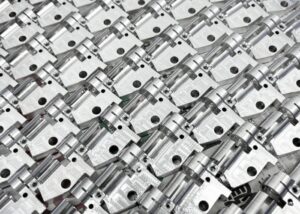
Here are my suggestions based on different scenarios:
Choose According To Production Needs
If the production is mainly flat parts, simple contours, or the annual output exceeds 10,000 pieces, 3-axis CNC is the best choice. If complex curved surfaces, inclined holes or multi-faceted processing are involved, the 5-axis CNC has obvious advantages in one-time forming and reduced flipping.
Consider Budget And Return On Investment
When the enterprise budget is limited and the demand has not yet been clearly expanded to complex structures, it is recommended to invest in 3-axis CNC first . If there is a clear order for high-precision complex parts and the customer has strict requirements on delivery time, investing in 5-axis CNC can obtain higher long-term returns.
Assess The Skills Of Your Operations Team
If the factory lacks 5-axis CNC programming and debugging personnel, blindly purchasing high-end equipment may lead to production stagnation. It can consider external training, introducing experienced talents, or transitioning from the “3+2 axis” model first.
Do I Need To Upgrade From 3-axis To 5-axis
If current production often encounters problems such as high number of flips, poor positioning accuracy, and multiple polishing required for surface processing, and is supported by stable orders, upgrading to 5-axis CNC is a reasonable investment.
Special Comparison: 3+2 axes vs 5 axes At The Same Time
In CNC machining, in addition to the traditional 3-axis and 5-axis, there are also two modes: “3+2 axis” and “simultaneous 5-axis”. Although they both belong to multi-axis machining, they have significant differences in working principles, application scenarios, and performance advantages.
As a production engineer, I have compared these two models many times in the field of molds and aviation parts. Below I will explain in depth with examples :
Definition And Advantages Of 3+2 axis
3+2 axis, also known as “positioning 5-axis” or “fixed axis 5-axis”, means that on the basis of 3-axis CNC, the workpiece is adjusted to a fixed angle through two rotating axes, and then processed in 3-axis mode. The rotary axis only operates during positioning and does not participate in the movement during cutting.
The advantages of this mode are simple operation, low programming difficulty, and low equipment cost (about 30% cheaper than full 5-axis CNC). When I helped a medical device company process a complex pedicle screw, I used the 3+2 axis mode to position the workpiece at a specific angle and then cut the oblique hole, which not only ensured the hole position accuracy, but also avoided the error caused by multiple flips.
3+2 axis is particularly suitable for: parts that need multi-angle processing but do not require continuous surface linkage, such as certain mold cavities, automobile engine cylinder head hole processing, etc.
Definition And Advantages Of Simultaneous 5-axis
Simultaneous 5-axis, that is, five axes operate simultaneously during the cutting process, realizing relative movement between the tool and the workpiece in any direction. This method can continuously cut complex curved surfaces and reduce the steps of tool change, flipping and positioning.
At the same time, 5-axis has an irreplaceable advantage in processing parts with complex free-form surfaces and continuous curvature changes (such as aviation blades, medical prostheses, and tire molds). In the processing project of aircraft engine turbine blades that I participated in, only 5-axis can meet the requirements of ±0.01 mm accuracy and Ra 0.8 μm surface, and only one clamping is required throughout the process.
Limitations And Applicable Scenarios Of Both
The limitation of 3+2 axes is that it cannot process free-form surfaces that require the tool to continuously change angles, and is limited to “fixed angle” processing . At the same time, although 5 axes has the most powerful functions, it has high equipment investment, complex programming, and difficult operation.
My suggestion is: if the product structure is mainly multi-angle planes and the budget is limited, give priority to 3+2 axes . If it involves continuous curved surfaces, complex shapes, and high-end precision requirements, simultaneous 5 axes should be selected.
Applicable Industry Comparison
In my many years of CNC machining projects, I have found that the requirements for 3-axis and 5-axis (including 3+2-axis and simultaneous 5-axis) in different industrial fields vary significantly. Each industry has different requirements for part complexity, precision, production batch and processing efficiency, so the equipment selection also presents distinct characteristics.
In order to help manufacturing companies make more scientific equipment choices based on their own industry positioning, I have compiled the following targeted analysis based on actual cases and experience to fully demonstrate the applicability and priority options of various industries :
Aerospace Industry
Aerospace parts such as turbine blades, structural frames, door frames, etc., mostly have special-shaped structures, free-form surfaces and high-precision requirements. Such parts require complex tool paths and continuous multi-angle machining, and simultaneous 5-axis CNC is the only feasible solution.
I once participated in the processing of aircraft engine blades. Each blade contained up to 80 variable-angle surfaces. At the same time, the 5-axis CNC completed 90% of the processing volume overnight. Using 3+2 axes required segmented positioning and manual intervention, and the efficiency and accuracy were far inferior.
Medical Device Manufacturing
Medical devices such as surgical prostheses and dental implants require complex three-dimensional surfaces and extremely high surface finish. 5-axis CNC has become the mainstream in the custom processing of orthopedic and dental prostheses. 3+2 axes can meet the processing of some standard parts, such as the processing of bone plate fixing holes, while personalized customized products cannot do without simultaneous 5 axes.
When I provided customized crown services at a dental hospital, I used a simultaneous 5-axis CNC to directly convert the scan data into cutting paths, thereby achieving accurate restoration of the simulated tooth shape.
Mold Manufacturing
The mold industry involves a large number of cavities, curved surfaces, and special-shaped structures. High-precision molds often rely on 3+2-axis or simultaneous 5-axis CNC to achieve smooth curved surfaces inside the cavity. 3-axis CNC is suitable for rough machining of mold shapes and standard plane processes.
In the processing of a high-gloss mobile phone shell mold, I used simultaneous 5-axis CNC one-time molding, which shortened the delivery time by 40% and reduced the mold polishing cost by 30% compared with the customer’s original 3-axis + EDM strategy.
Auto Industry
Among automotive parts, 3-axis CNC is widely used in the production of simple and large-scale parts such as engine housings, gearbox bases, and suspension brackets. 5-axis CNC is used for automotive molds, racing car parts, and high-end customized parts.
A racing car supplier approached me to process an aluminum alloy rocker arm that needed to meet requirements for lightweight, strength, and complex appearance. Ultimately, I used simultaneous 5-axis CNC to achieve an integrated structure, which is 18% lighter and 15% stronger than welding assembly.
Small Batch Production Of Highly Complex Parts
Small batches of high-complexity parts, such as laboratory test fixtures, art sculptures, and complex custom parts, are what 5-axis CNC specializes in. 3-axis CNC is not competitive in such tasks due to the multiple clamping.
An art college customized a batch of complex exterior wall decoration surfaces for 1:10 architectural models. I used 5-axis CNC to realize complex curves, bevels, and hollow structures, reducing the manual intervention of traditional manual polishing.
FAQs
What Is The Difference Between 3 And 5 Axis CNC?
I operate both. A 3-axis CNC moves in X, Y, and Z. A 5-axis CNC adds two rotation axes, allowing complex angles. It reduces setups by 70%, improves precision, and handles curved surfaces that 3-axis can’t achieve.
What Are The Benefits Of 5 Axis CNC?
I use 5-axis CNC to machine complex shapes in one setup. It increases precision to ±0.005 mm, improves surface finish, reduces fixture changes, and shortens lead times—ideal for aerospace, medical, and mold industries.
What Are The Limitations Of 3-Axis CNC?
I find 3-axis CNC limited for multi-face or undercut features. It needs multiple setups, increasing time and error risk. Surface finish and accuracy (±0.02–0.05 mm) are lower on complex or angled surfaces.
What Can I Make With A 5 Axis CNC Machine?
I’ve machined turbine blades, surgical implants, impellers, and molds using 5-axis CNC. It excels at freeform surfaces, deep cavities, and multi-angle features in aerospace, medical, and high-precision industries.
How Much Does 5 Axis CNC Machining Cost Per Hour?
In my projects, 5-axis CNC costs $90–$200 per hour. Price depends on material, complexity, and tolerance. Aerospace or medical parts needing ±0.005 mm precision push rates toward the higher end.
What Is The Advantage Of Adding A Fifth Axis (The C Axis) To A Vertical CNC Machining Center?
By adding a C-axis, I gain full rotary positioning, machining around a part without reclamping. It improves precision, reduces setups by 40–60%, and enables cutting angled holes or features in one run.
What Is The Principle Of 5-Axis CNC Machine?
The 5-axis CNC moves X, Y, Z plus two rotation axes (A, B, or C). I use its principle to keep the tool aligned to the surface, improving cutting angles, reducing tool deflection, and achieving complex geometries.
Conclusion
Through a comprehensive comparison of 3-axis and 5-axis CNC, I found that each has its own advantages: 3-axis is suitable for standard parts and mass production, with low cost and simple operation , while 5-axis is good at complex surfaces and high precision requirements, suitable for high-end fields such as aviation, medical treatment, and molds. When choosing equipment, we should combine product complexity, precision requirements, budget and team skills, pursue “the most suitable” rather than “the most advanced”, and achieve the best balance between investment and benefits.

